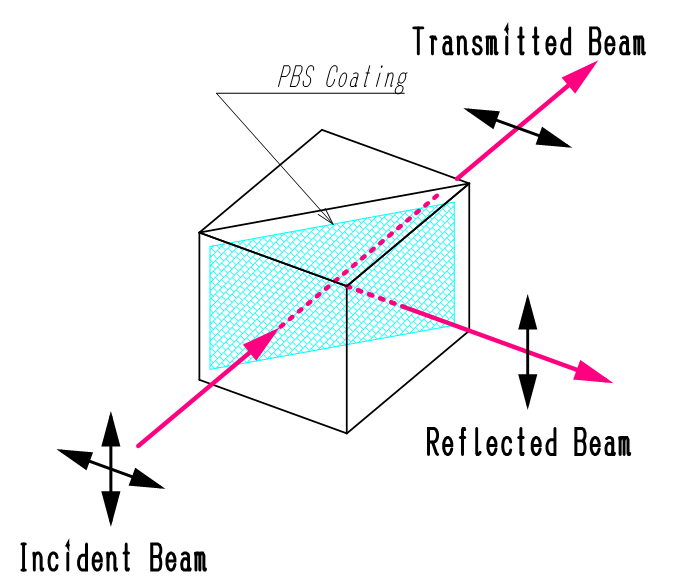・Pellicle Beam Splitter
Pellicle beam splitters consist of a nitrocellulose membrane mounted inside a metal housing. Since the membrane is only a few micrometres thick, the reflected light from two surfaces overlaps with the reflected light from one surface, eliminating ghosting. Additionally, the Pericle-type beam splitter minimises chromatic dispersion and chromatic aberration, making it ideal for applications requiring beam focusing. Although it is extremely lightweight, the thin film is highly delicate and requires careful handling. Due to its flammability, it is only suitable for use with low-power light.
・Crystal Beam Splitter
Crystals such as magnesium fluoride (MgF2), calcite, quartz, α-BBO, and YVO4 generate polarisation in transmitted and reflected light due to the interaction between light and the optical axis of the crystal. The advantage of crystal beam splitters is that they have relatively high damage thresholds and extinction ratios compared to plate-type or cube-type polarising beam splitters. Therefore, they are suitable for use with polarised laser light sources. Crystal-type beam splitters come in two types: bulk single-crystal types and types where multiple crystals are bonded using adhesive or optical contact. Since crystals can be damaged by thermal shock, care must be taken in handling and environmental conditions.
・Brewster Window
The Brewster window is an uncoated substrate (UV-grade fused silica) that, when positioned at the Brewster angle, has a circular profile relative to its optical axis. At the Brewster angle, the P-polarised component is transmitted without reflection loss, while the S-polarised component is partially reflected. Brewster windows can be stacked and used as polarizers or to improve the polarisation ratio of a beam.
・Wedge-shaped beam splitter
A wedge-shaped beam splitter separates a single incident light into multiple lights through reflection and refraction. The incident light gradually attenuates and becomes multiple exit lights with various exit angles. The deflection angles of these exit lights can be calculated.


